Section A. International trade in Early Modern History
International trade represented one of the more relevant historical and economical phenomena in Early Modern History. Connecting countries and continents, it created wealth and culture, concerned thinkers, occupied men of all sorts and fortune, generated its own institutional systems, and arose as one of the main aspects of the political life at that time. Historians have put their interest in the international trade constantly, and its study has experimented many methodological and conceptual variations along the years. This subject, in constant renovation and always in permanent scholarly attention, invites to celebrate scientific meetings in order to discuss ideas, produce new documents and material, ponder historiographical advances and suggest new ways of working in this field. For this reason, we call here and now everyone who may contribute to the progress of this line of research.
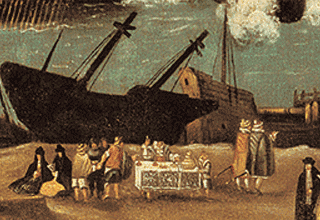
A1. Business bourgeoisie: agents, families, nations, networks.
This sub-section is related to the study of the ways that trade could influence the social systems of Early Modern History and, specially, the development of merchants and traders as a social group. Works with a Social History approach are preferred here, i. e., biographical and familiar reconstructions, national communities studies, network analyses, ennoblement and aristocratization processes, etc.

A2. Commercial cities.
Urban History has proved the close relation between the apogee of big European capitals and international trade. This section is devoted to enquire in the different aspects of the urban milieu enhanced directly or indirectly by the commercial activity and its capitals. Thus, the demographical evolution, urban transformations, productive and exchange structures, dynamic constitution of elites, cultural manifestations, etc., will be welcome.

A3. Trade instruments, routes and practices.
International trade was one of the more sophisticated activities within the economic system in Early Modern History. This sub-section will study the trade within its more specific facet, as economic practice in itself. Contributions about enterpreneurial structures, market evolution, volume of bussiness, routes, merchandises, ways of financing, accounting, commercial private archives, and similar aspects.
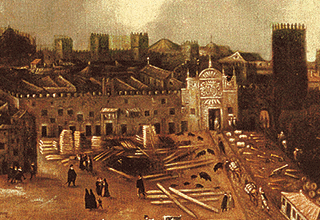
A4. Trade politics and institutions.
Political history has confirmed the existence of different links between high scale trade and political agents. This last sub-section will include papers which could contribute to those links and treat subjects related to institutional structures of trade, their dialogue with political power, the fiscal contribution of merchants to the Early Modern states or the relationship existing between commercial interests and the definition of general politics in a specific country.
Section B. Life and culture in Early Modern Spain: representations and practices.
In last decades the the traditional dominance of History of Ideas gave floor to a multiple historiographical approaches which nowadays work with a more complex concept of culture and of the understanding the presence of it in human societies life. Thus, historians valorate now every thing related to everyday life, introducing different proposals which let overcome outlines someway too simple about the major and minor processes linked to output and cultural reception which took place in Early Modern History. The role of individuals, environment, creative developments and the many ways of perception are proposed in this Section for their study from a historical perspective attending to its relation with emotions, feelings, imagination and prejudice, understood as constitutive elements of people and society, but also as actors who mark their lives in their own historicity.
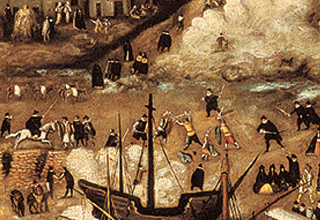
B1. Everyday dimensions.
The widening of the historiographical field, the will for making a history of everybody and everything, added to the multiplication of historical subjects, have placed the everyday things in the center of interest to many historians. In this sub-section all the dimensions compounding the everyday life in Early Modern Societies are subject of study, like feeding, dressing, the house, familiar and social life, working and subsistence, personal relationships, conflict and agreements, charity and the lack of it, precariousness and disease, poverty and wealth, beauty and ugliness, from childhood to old age, and everything embedded in the diversity imposed by geography, urban or rural scope, and private or public space.

B2. History of feelings and emotions
Researching over the historicity of human feelings and emotions has opened an interesting field of work. In this sub-section will be incorporated studies about feelings and human perception about life, death, nature and hereafter, and that is why between its principal features could be found love, friendship, sexuality, religious feelings, the experience of climatic accidents and public calamities, attitudes developed towards foodstuff and animals, and also to inanimate objects, the place for privacy, the individual and collective preferences for taste or repulse, prejudice (social, racial or class) and the perception that social groups had of themselves and of the others. As well, contemporary theories about human behaviour and the place corresponding in it of feelings and emotions will be object of study.
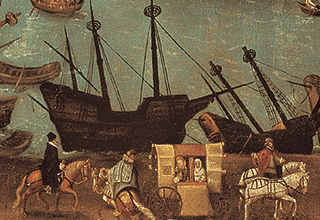
B3. Writing, the book and circulation of ideas
Print birth represented not only a technological revolution, but also a deep transformation in the relationship with the book and writing developed by the Early Modern societies, as well as in the social and cultural meaning of these two issues. In this sub-section will be accepted studies binded to a classical history of the book (printing, book shops, book commerce, educative institutions, first letters's teacher, literacy, libraries, social dissemination of books and manuscripts, exposed writing, news’ panphlets, diaries, memories...) or to a more precise history of creation (writing work, texts’ creative process, transformations due to the printing and linked to the conformation of texts in book format, the influence of censorship in the intelectual work) and finally, works related to the new Histoy of reading, devoted to the restitution of historical ways of its practice, the relationship started around written objects, the reconstruction of appropiation communities and to the individual and social processes building the meaning of texts.
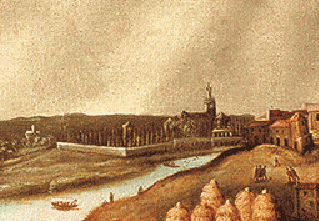
B4. The building of reality: images and visions of the world.
The aim of this sub-section is to explore the vast and diverse horizon of how people imaginated and discerned the inmediate world and what it was beyond in Early Modern times. Thus, here will be required works about world images and visions, concerning countries, lands, peoples, nations and social and religious systems generated by chroniclers, writers, travellers, state men and politicians, cartographers, seamen, military men, clergymen, artists, colonists and settlers, colonized people or simple onlookers. In this sense, will be welcome not only the written discourses, but also the expressions of reality translated through iconography, maps, science works, engraves, or any other way employed to refer to parts or to the whole of reality as human beings in Early Modern times could conceive it.
Panel discussions
Panel discussion 1: Fictions of modernity: literature, image and cinema.

Panel discussion 2. Innovation, teaching improvement and methodological renovation in Early Modern History academic teaching: academic and professional challenges.

 Español
Español